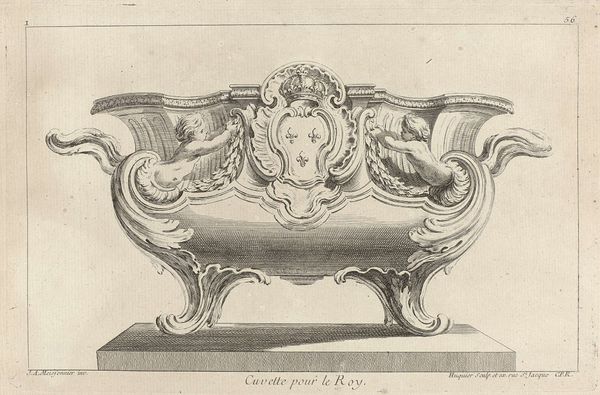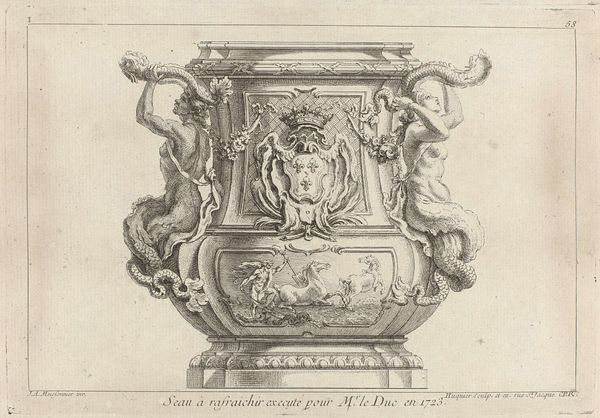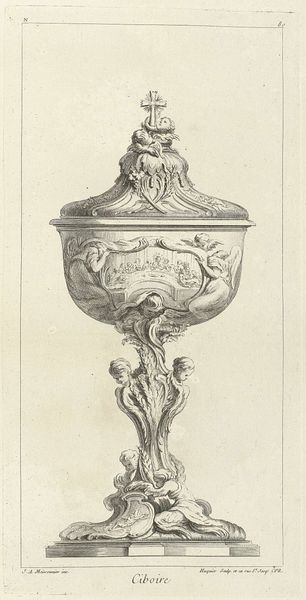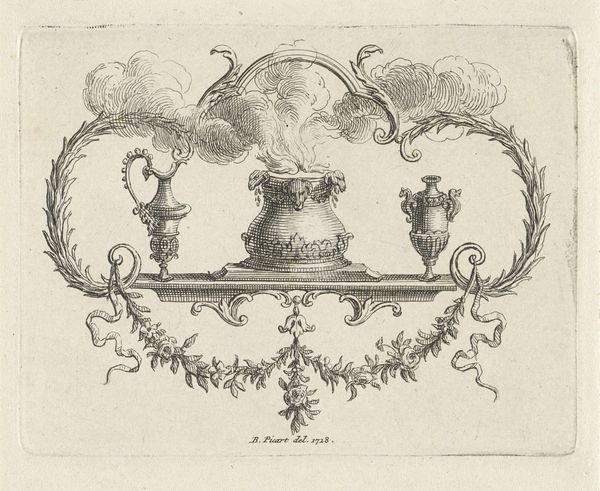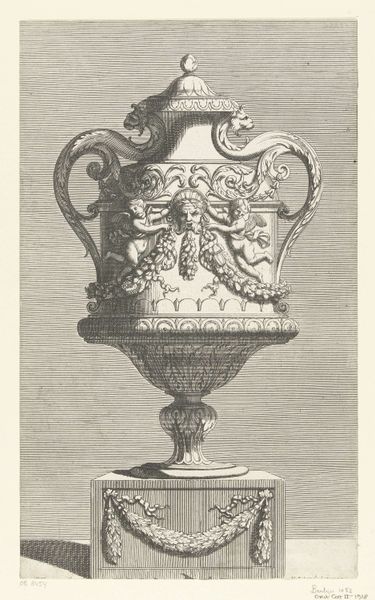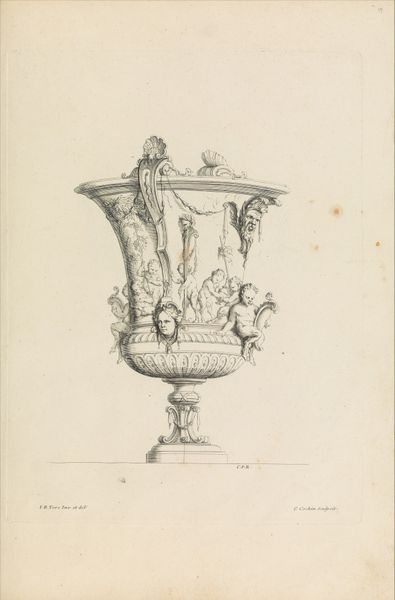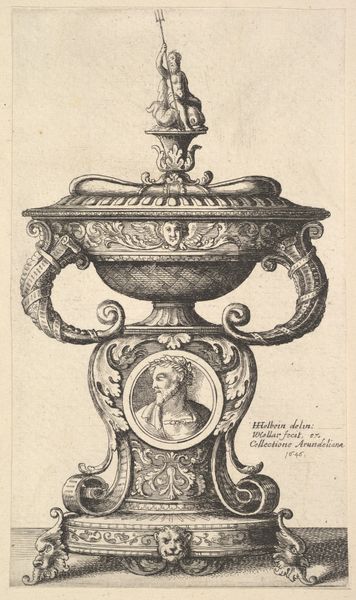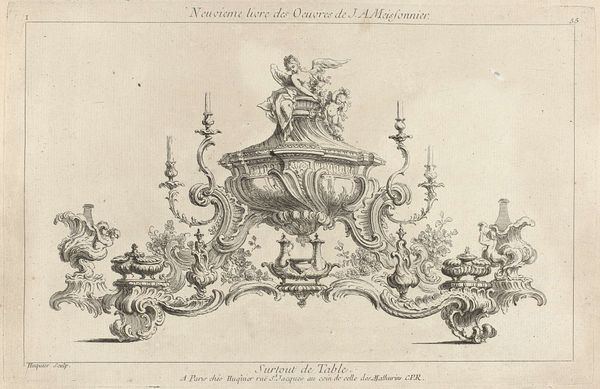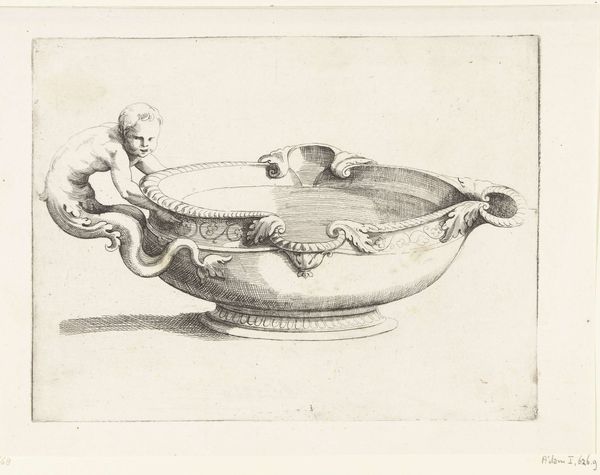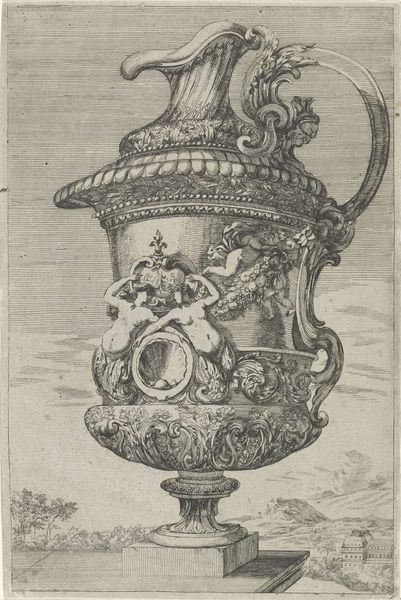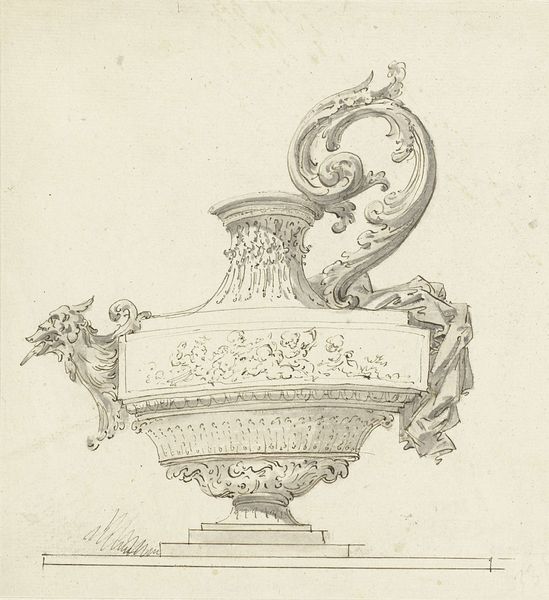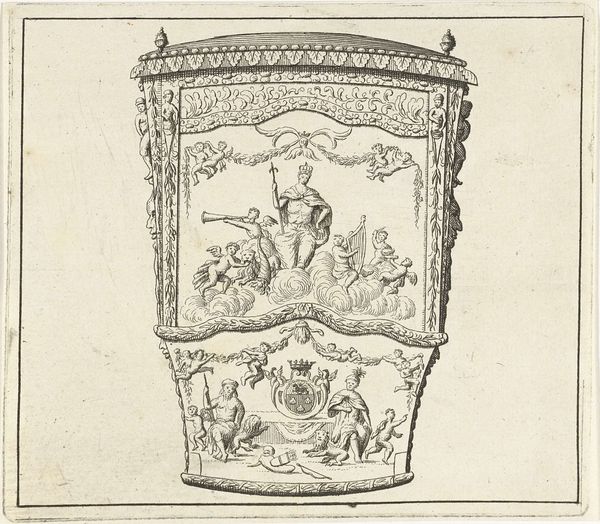
Ontwerp voor een sierstuk met het wapen van de Franse koning 1738 - 1749
0:00
0:00
gabrielhuquier
Rijksmuseum
drawing, print, pen, engraving
#
drawing
#
baroque
# print
#
old engraving style
#
form
#
pen-ink sketch
#
line
#
pen
#
decorative-art
#
engraving
Dimensions: height 178 mm, width 273 mm
Copyright: Rijks Museum: Open Domain
Editor: This is "Ontwerp voor een sierstuk met het wapen van de Franse koning," or "Design for an ornamental piece with the coat of arms of the French King," dating from 1738-1749 by Gabriel Huquier. It's a pen and engraving piece housed at the Rijksmuseum. The level of detail is impressive; you can even make out a merman! What's your take on a work like this? Curator: What strikes me immediately is how this design reveals the intertwined nature of art and power. Consider the "nef," the ship-shaped vessel, historically used for royal table settings. The symbolic weight it carries – royalty, prestige, naval dominance. It wasn't just functional; it communicated status. How does the display of this kind of piece reflect the culture of its time? Editor: That’s interesting, I hadn't really thought about how much these items conveyed. In our world, even dining objects are rarely designed with such grand intention! So, is that ornate design merely aesthetic? Curator: Hardly. This Baroque style, with its elaborate curves and symbolic imagery, served the Bourbon monarchy's propaganda. The lilies in the coat-of-arms aren’t just decoration; they are a visual shorthand for divine right. How might its display in court reinforce hierarchies? Editor: It's fascinating to see how seemingly innocuous objects could play a role in legitimizing power structures. Now, I'm viewing this design as a political artifact rather than *just* a drawing! Curator: Precisely! Thinking about pieces like this makes us ask, how do institutions like the Rijksmuseum impact our understanding of a piece? Is displaying it here taking away from the artwork's original political message? Editor: That’s something to think about. I see that design, in any case, is a language for social meaning, with a context so different from today’s. Thank you for that historical context!
Comments
No comments
Be the first to comment and join the conversation on the ultimate creative platform.
